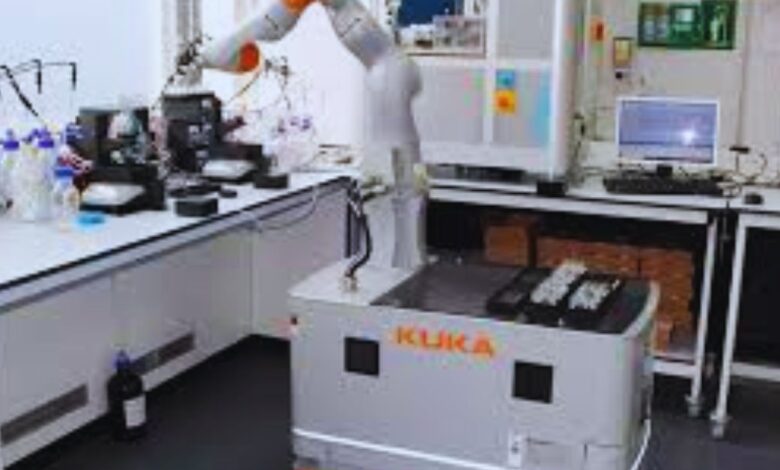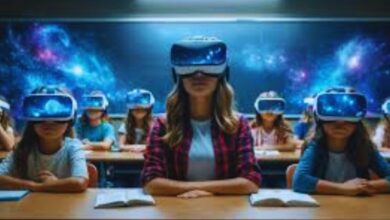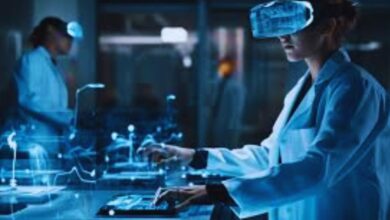The Role of AI in Enhancing Virtual Laboratory Simulations

What Are Virtual Laboratory Simulations?
Virtual laboratory simulations are digital environments where students can conduct experiments and practice scientific techniques without being physically present in a traditional lab setting. These simulations are created using sophisticated software that mimics real-world laboratory scenarios. The primary goal of virtual labs is to provide an interactive platform for learners to explore science concepts, perform experiments, and solve problems in a controlled virtual environment.
Virtual labs are particularly beneficial in fields where hands-on lab access is limited or not feasible due to cost, safety concerns, or geographical constraints. These simulations offer an immersive learning experience, which helps bridge the gap between theoretical knowledge and practical application.
AI’s Contribution to Virtual Labs
AI plays a pivotal role in the evolution of virtual laboratory simulations, offering a range of capabilities that significantly enhance their effectiveness. Below are some of the key contributions of AI to virtual labs:
- Personalized Learning Experience
AI has the ability to adapt to individual learning styles and needs. By analyzing a student’s interactions with the simulation, AI can tailor the experience to suit their pace, strengths, and areas of improvement. For example, AI can suggest specific exercises or experiments based on a learner’s previous performance, ensuring they receive targeted guidance. This personalized approach helps students to better understand complex scientific concepts and master new skills at their own pace.
- Real-Time Feedback and Assistance
One of the biggest advantages of AI in virtual laboratory simulations is its ability to provide real-time feedback. In traditional labs, students may not have immediate access to guidance or support if they make a mistake or encounter difficulties. However, AI-powered simulations can instantly analyze a student’s actions and provide corrective suggestions or explanations. This feedback helps learners understand where they went wrong and how to improve their performance, fostering a more engaging and self-directed learning process.
- Automated Experimentation
AI can also automate various aspects of virtual laboratory experiments. For instance, AI can control the simulation environment by adjusting variables or modifying equipment settings, allowing students to focus on understanding the science behind the experiment rather than on repetitive tasks. This automation helps streamline the learning process, making it more efficient and less time-consuming. Additionally, AI can analyze data in real-time, providing students with instant results and detailed analysis, which accelerates the learning process.
- Enhanced Data Analytics and Visualization
AI-powered simulations can collect and process vast amounts of data generated during virtual experiments. Through advanced algorithms, AI can identify patterns, trends, and insights that may not be immediately apparent to the learner. These insights are then presented through visualizations that help students grasp complex concepts more easily. For example, AI can generate graphs, charts, and simulations that show how different variables interact with each other, enabling learners to explore data-driven insights in a dynamic and engaging manner.
- Improved Accessibility and Inclusivity
AI has the potential to make virtual laboratory simulations more accessible to students with diverse needs. For learners with disabilities, AI can be used to adjust simulations for different sensory inputs, such as visual or auditory cues. AI can also offer language translation services, enabling students from different linguistic backgrounds to access the same resources. These features help create an inclusive learning environment where all students, regardless of their abilities or backgrounds, can participate in the same high-quality educational experiences.
- Simulating Complex and Dangerous Experiments
AI can simulate complex or hazardous experiments that would be difficult or unsafe to perform in a traditional laboratory setting. This feature is particularly useful in fields such as chemistry, biology, and physics, where certain experiments involve toxic substances, high temperatures, or dangerous reactions. Virtual labs powered by AI can replicate these experiments in a safe, controlled, and risk-free environment. Students can learn valuable hands-on experience without the threat of physical harm, ensuring both safety and learning opportunities.
Future of AI in Virtual Laboratories
The integration of AI in virtual laboratory simulations is still in its early stages, but the future looks incredibly promising. As AI continues to evolve, we can expect even more sophisticated simulations that mimic real-world laboratory scenarios with greater accuracy. Advancements in machine learning, natural language processing, and computer vision will further enhance the realism and effectiveness of virtual labs.
Moreover, AI can potentially foster collaboration among learners worldwide. With AI-powered simulations, students from different parts of the globe could work together on complex experiments in real-time, sharing data, insights, and results. This level of collaboration can create an interconnected global community of learners and researchers, further enhancing the educational experience.
Conclusion
AI is revolutionizing virtual laboratory simulations by making them more interactive, personalized, and efficient. The incorporation of AI allows students to learn at their own pace, receive instant feedback, and engage in complex experiments safely. With advancements in AI technologies, virtual labs are becoming an increasingly valuable tool in modern education, enabling learners to gain hands-on experience in fields that require practical expertise. As AI continues to evolve, it will undoubtedly play a crucial role in shaping the future of education and scientific research.



